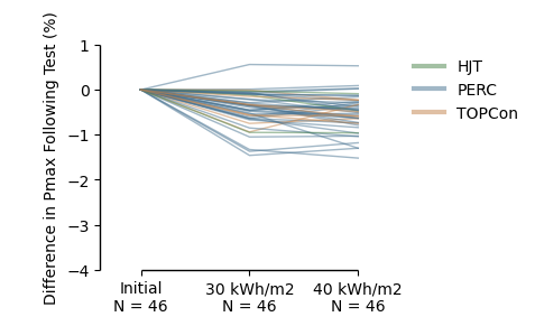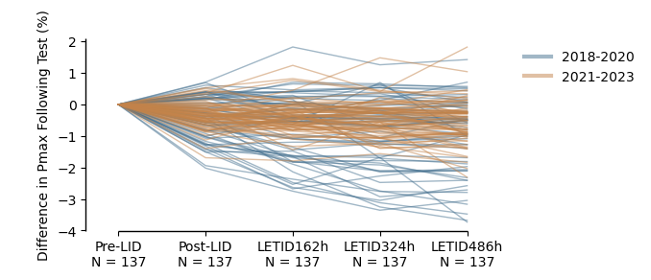New cell technologies such as HJT and TOPCon are marketed with improved first year and annual degradation rates, but both technologies have been shown1, 2 to be sensitive to ultraviolet light-induced degradation (UVID) , in particular when combined with UV-transmitting encapsulants. Research has shown that one the main mechanisms of this degradation is damages to the cell passivation layers and interfaces with the silicon bulk caused by UV light.
At the same time, PVEL’s recent testing has shown that commercially mass-deployed PERC modules can also exhibit UVID-related power loss. We’ve developed a new UVID test sequence to assess these concerns as these technologies continue their rapid adoption.
The 120 kWh/m2 of front-side UV exposure, with test samples in short-circuit condition (Isc) and a temperature of 60°C, will allow modules buyers to understand if modules are susceptible to UVID in a relatively quick and economical test. This test duration is equivalent to approximately one or two years of field exposure, depending on the location, and is intended to provide a screening method for assessing the suitability of the manufacturer’s warranty conditions.
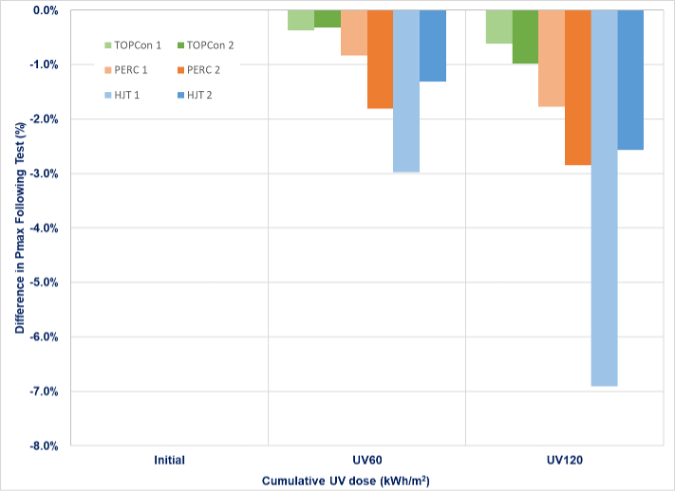 UVID results from PVEL’s recent testing of randomly selected modules shows a range of susceptibilities and power loss. Note: results are not a statistically significant sample of each cell technology and other results may vary.
UVID results from PVEL’s recent testing of randomly selected modules shows a range of susceptibilities and power loss. Note: results are not a statistically significant sample of each cell technology and other results may vary.
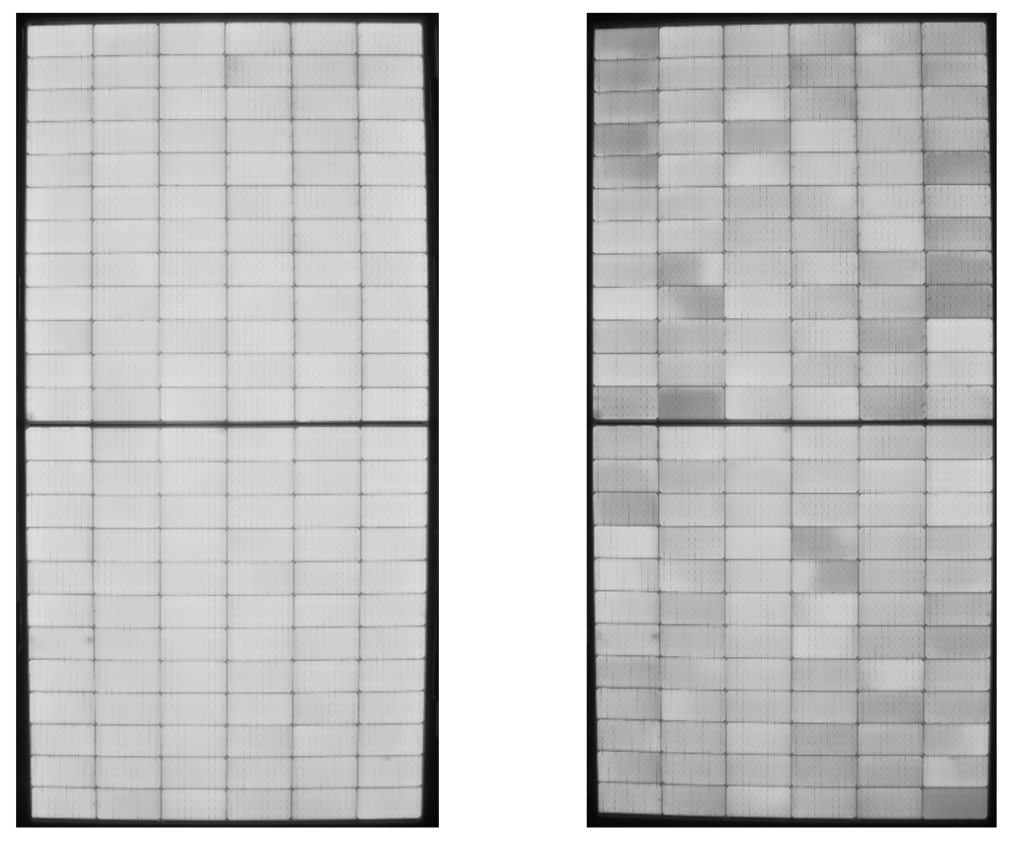
Post-UVID120 change in EL image for a UV-sensitive PERC module.
While several researchers have observed a higher degradation when performing rear-side UV exposure, up to a factor of four1 for some technologies, it is important to note that even optimized bifacial systems see an average of less than 10% bifacial gain. Of this rear side irradiance boost, only a limited amount falls within the UV spectral region, so one would expect the annual UV dose on the rear side to be lower by a factor greater than 10. Thus, PVEL’s UVID test has been focused on the most impactful metric which is front side power degradation.
1 Archana Sinha, et al. UV-induced degradation of high-efficiency silicon PV modules with different cell architectures https://doi.org/10.1002/pip.3606
2 Witteck R, Schulte-Huxel H, Veith-Wolf B, et al. Reducing UV induced degradation losses of solar modules with c-Si solar cells featuring dielectric passivation layers. In 2017 IEEE 44th Photovoltaic Specialist Conference (PVSC), 2017, pp. 1366-1370. doi:10.1109/PVSC.2017.8366019 Reducing UV induced degradation losses of solar modules with c-Si solar cells featuring dielectric passivation layers | IEEE Conference Publication | IEEE Xplore

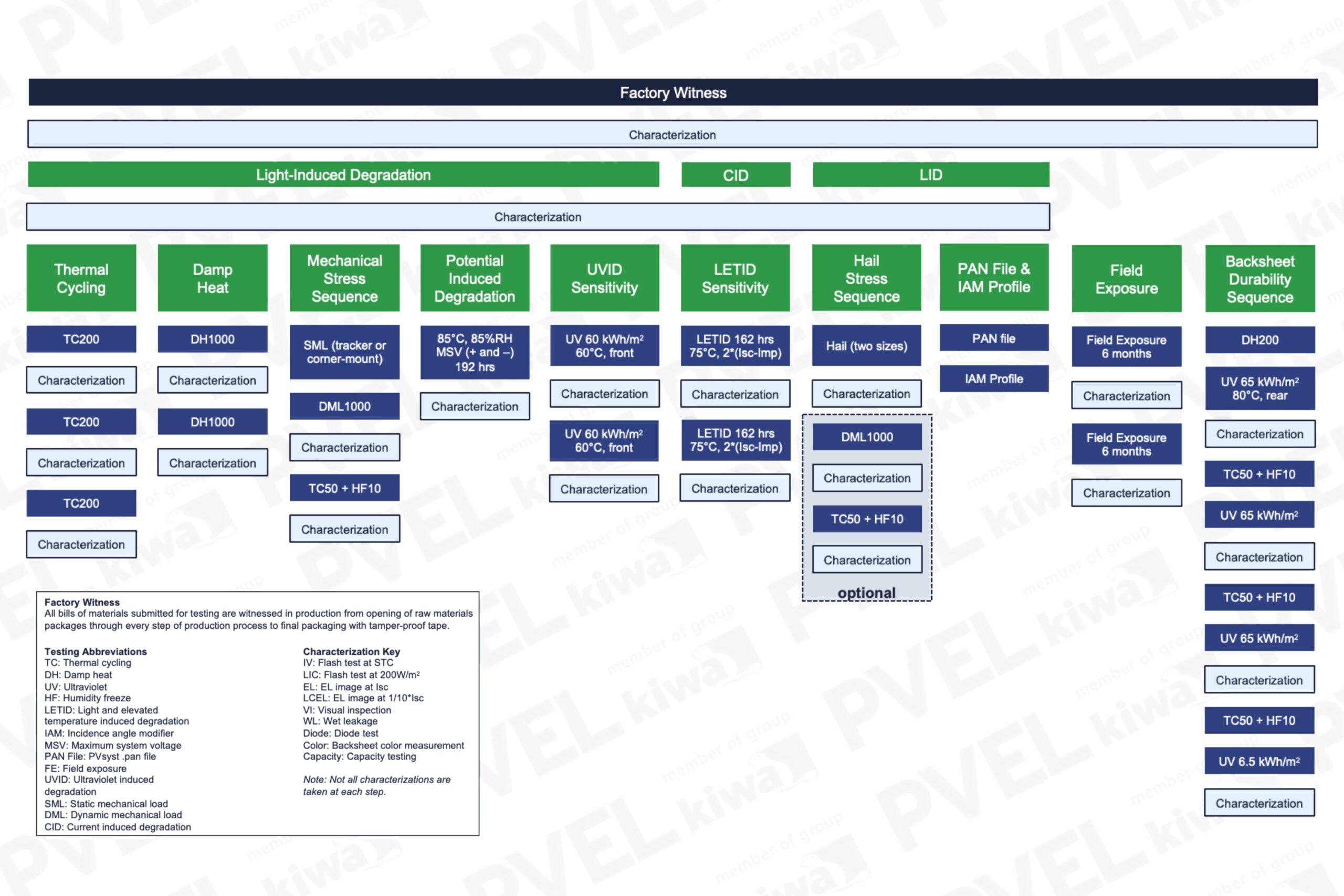
 UVID results from PVEL’
UVID results from PVEL’
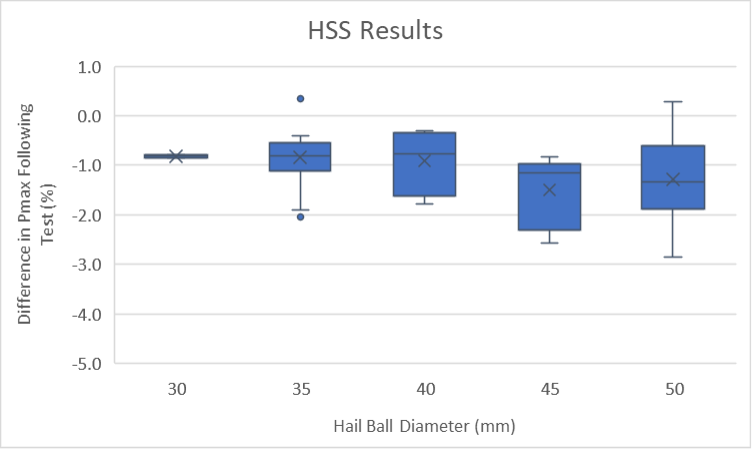
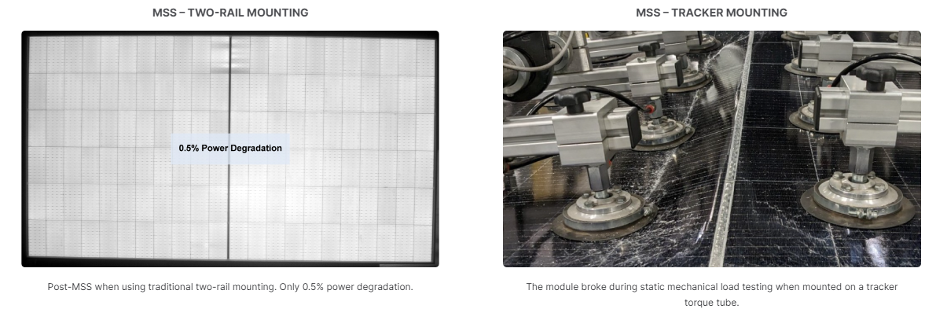 This example shows the same large-format glass//glass module (2384 x 1303 mm) performing exceptionally well during the standard MSS test (on the left), but experiencing glass breakage when tested at < 1600 Pa when mounted to a single axis tracker torque tube (on the right).
This example shows the same large-format glass//glass module (2384 x 1303 mm) performing exceptionally well during the standard MSS test (on the left), but experiencing glass breakage when tested at < 1600 Pa when mounted to a single axis tracker torque tube (on the right).